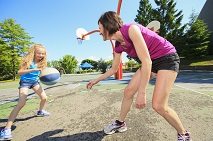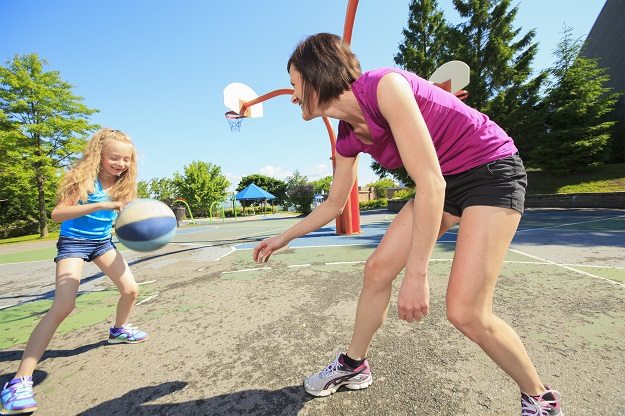4 Tips to Motivate Kids to Be Active

You’ve likely heard the statistic before: over one-third of children and adolescents are overweight. That number has more than doubled in children and quadrupled in adolescents in the last 30 years, reports the Centers for Disease Control and Prevention (CDC). The CDC suggests lowering the risk of obesity and its associated health problems through a healthy diet and increased physical activity.
Schools play a vital role in establishing these healthy habits and helping children develop a positive relationship with their health. As a Together Counts™ partner, we want to encourage you to consider these ways you and your fellow educators can help motivate kids to be more active.
Promote Game Play
Physical education is great for children and adults alike, but when children develop a poor relationship with exercise, they’re unlikely to maintain an active lifestyle later in life. That’s why physical activity needs to be fun. When it feels more like a game than a chore, students will be excited to get moving!
For instance, physical activity shouldn’t be all about running laps. While running is excellent for your health, not all kids will enjoy it. Instead, try giving them an objective by playing games with them on the playground and in the gym. An aerobic game, such as Aerobic Bowling, will get students running around, but they’ll be more engaged since the game has a sense of purpose and strategy to it.
Don’t forget that you don’t need a gym or playing field to get kids to be active. Kids can get moving with limited space, even if that means minor activities like standing or jumping. For instance, have your students stand in a circle and toss a ball or bean bag to each other. The one holding the object must answer the next question in your lesson. It may not seem like a lot, but simply standing can help combat some of the health issues associated with prolonged sitting. For more ideas for physical education and activity in tight spaces, check out the SPARK webinar “No Gym? No Problem!” presented by Chairman Sutherland. You can view the free recorded webinar on SPARKecademy.org.
Avoid Using Physical Activity to Reinforce Behavior
Why do you think some children are reluctant to engage in physical activity? Is it perhaps because they view it as a punishment? When educators and parents use it as a punishment, it becomes that in a child’s mind.
For instance, when a student is late for practice, a coach might tell him to do 20 pushups. If they’re taught that physical activity is a punishment for their actions, they might not continue to enjoy it.
Likewise, some educators believe that withholding physical activity doesn’t help the situation, either. For instance, holding a child in from recess may teach him that physical activity and play aren’t important to his overall well-being.
Don’t Make Everything a Competition
While many games played in PE class are all about one team winning or losing, it’s important that students understand that not all forms of physical activity require competition. If they grow up learning that physical activity is all about the competition, how many do you think will develop a habit of activity when there aren’t sports teams available to them?
Instead, encourage children to find and pursue activities they enjoy. The more they like it, the more they’ll be motivated to do it. For instance, while you can compete in swimming and biking, these can also be individual sports that are a lot of fun when done by yourself.
While a healthy dose of competition is good, it’s also worth exploring ways to promote individualized activities or those that are simply fun to do, like skating.
Consider the Students’ Ages
Each age group requires a different approach to physical activity since they’re all at different levels. Consider the following guidelines, outlined by age:
3-5 year olds:
- Get kids moving every 30 minutes or so
- Focus on the fun instead of competition, such as dancing
- Limit time spent with technology
6-9 year olds:
- Help children set physical goals for themselves, and let them pick those goals
- Explore numerous sports and activity options so children can decide what they like best
- Focus on sportsmanship and personal growth instead of competition
10-14 year olds:
- Teach children about their physical activity needs
- Begin helping refine movements, such as practicing free-throws instead of simply throwing the ball at the basket
- Help them track their goals
Motivating kids to be active starts with making activity a fun and rewarding experience. How will you motivate your students to be more active?
SPARK is a research-based organization that provides award-winning, evidence-based programs for Physical Education (K-12), After School, Early Childhood, and Coordinated School Health and is a member of the Together Counts™ Program. Since 1989, SPARK has provided curriculum, training, and consultation to over 100,000 teachers and youth leaders worldwide. Visit www.sparkpe.org to download sample lesson plans, find grant opportunities, and register for free educational webinars and monthly eNewsletters.
For more ideas on how to encourage physical activity, check out these articles from Together Counts:

